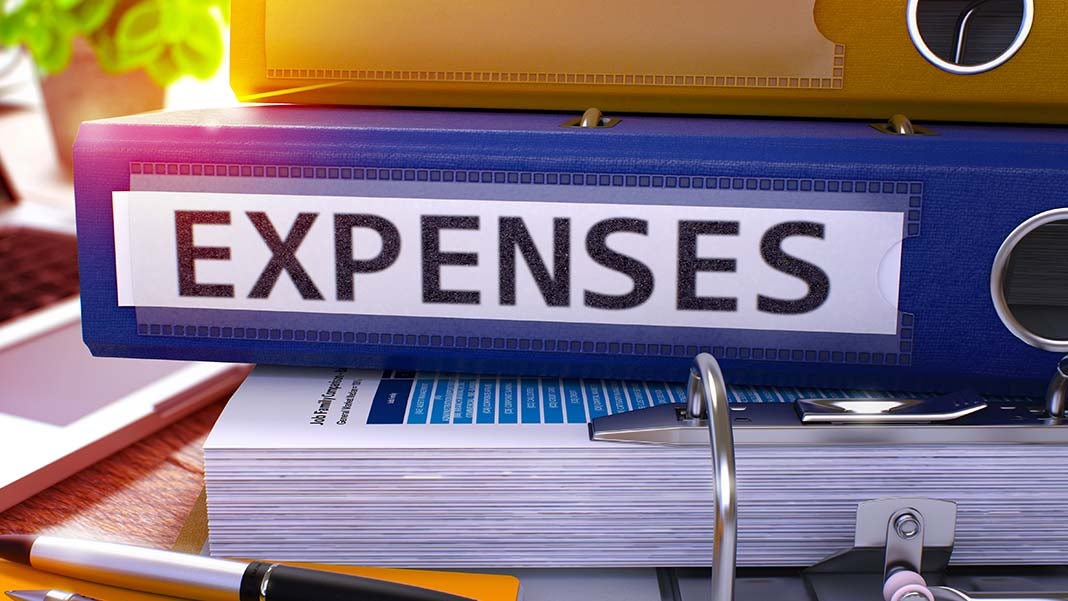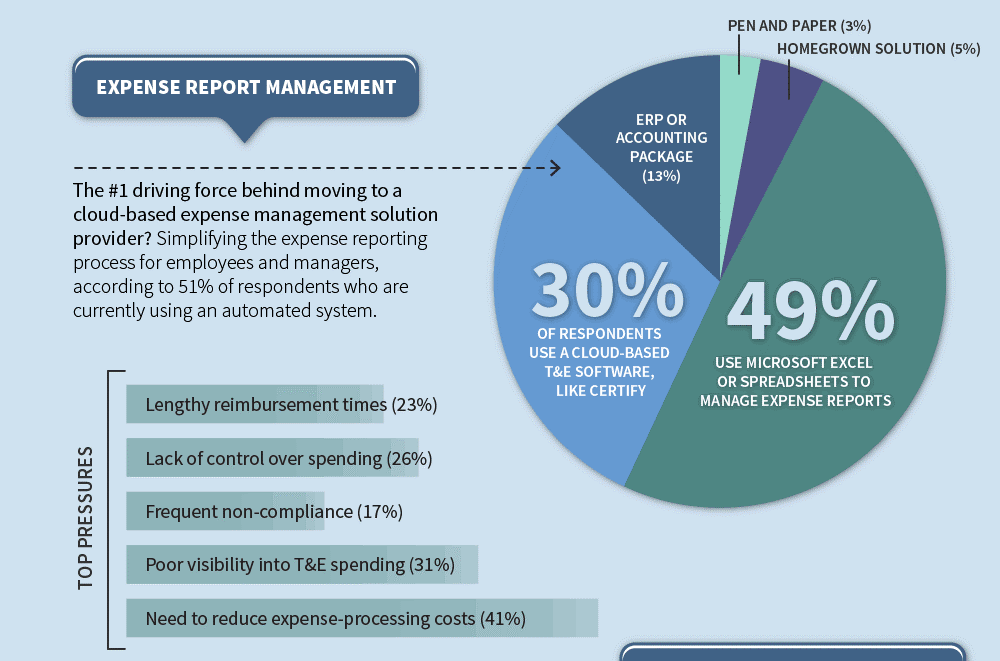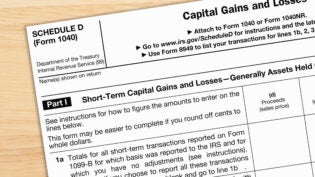Everything You Need to Know About Expense Reimbursement
By: Wagepoint

Travel, dining, mileage, office supplies and other costs that employees incur as part of their jobs are all considered business expenses. That seems straightforward enough.
What’s not so clear-cut is the process of reimbursing business expenses. If you’re in the process of establishing or revamping your company expense practices and procedures, the following is a comprehensive list of the main items to consider and key terms to understand.
Create an Expense Policy and Process
Starting with the obvious, industry expert Concur recommends creating an expense policy that’s simple and easy to understand. Ensure that you communicate this policy effectively and that every employee can access or reference it when needed. Along with this policy, you should also have a clearly defined set of processes on how and when to submit receipts, etc.
While 9/10 small to medium-sized businesses have an expense policy, without expense management software, they only see a 36% compliance rate.
Technology is Your Friend
In their 2015 Expense Management Trend Survey, Certify found:
- Simplifying the business expense report process was the top driving force behind the use of cloud-based apps and software.
- More than half of small business are still using spreadsheets or even pen and paper instead of a streamlined solution.
Research also showed that having expense policies built into reporting software improved compliance by 44%.
Image source: Certify 2015 Expense Management Trend Survey .
Help Your Employees Help You
By using expense management tools, you make it easier for your employees to file expenses. In turn, automating the process also makes it straightforward for businesses to track and report expenses. After all, the business as a whole has to report on the expenses it paid to the Internal Revenue Service (IRS) at the end of the year.
Use Online and Software-as-Service (SaaS) Tools
Accounting platforms, like QuickBooks Online, Xero and LessAccounting (all of which integrate with Wagepoint), can help you track expenses. When combined cloud-based and SaaS tools, like apps that allow users to scan receipts on the go, they become even more versatile. (They’re also a way to show a little love for employees who travel often as part of their roles.)
For a complete list of ingenious apps to help save you time and money, including several expense management platforms, see our list of The Best Productivity Apps for a Successful Back Office.
Say Good Bye to Paper Checks
In a recent blog post, Xero had a conversation with Bill.com about the potential dangers for the many small businesses that still rely on paper checks for expense reimbursement. Within this discussion, they cited a 2015 survey of 540 accountants and bookkeepers that indicated:
- Nearly half of all accountants advise against using paper checks for expenses.
- Paper checks make it harder to manage payments — a typical payment can take up to 20 steps .
- Criminals are more likely to target small businesses because of practices like using paper checks.
Really, No More Paper Checks
There’s a reason why this bears repeating: In its article, The Last Flight of the Paper Check, Tech.co cited that “Bank of America estimates each paper check costs business anywhere from $4 to $20 from start to finish, including labor costs and processing. The WSJ estimates that this antiquated process is costing US businesses up to $54 billion per year.”
Learn how direct deposit can also save you money on payroll in our article The Four Ways That Direct Deposit Benefits Your Business.
Know the Difference Between Accountable and Non-Accountable Plans
In an accountable plan, all expenses must have a valid business connection, be adequately documented by employees and any allowances or advances that exceeded the actual expenses must be returned in a timely manner. In a non-accountable plan, employees do not have to submit documentation or return any surplus allowance or advance amounts.
The big difference — other than the amount of paperwork — is that expenses from an accountable plan are not considered taxable income (not reported on W2s) for employees, while expenses from non-accountable plans are considered taxable income (reported on W2s).
Note: Employers are allowed to create hybrid solutions in which certain items are managed by an accountable plan, while others are handled by a non-accountable plan.
Understand How Accountable and Non-Accountable Plans Affect Reimbursements, Allowances and Advances
Expense reimbursements, allowances and advances are all considered payroll incomes, meaning any income an employee earns in addition to their pay.
- Reimbursements are payments made to compensate an employee for a business-related expense, such as travel, team incentives, office supplies, etc.
- In an accountable system, reimbursements are not considered taxable income for the employee. This is because the amount paid is replacing income that the employee had already earned.
- Reimbursements also require employees to submit receipts and/or formal expense reports.
- Allowances are regular amounts, paid out with each paycheck and used to cover routine expenses like meals, public transportation, parking, etc.
- In an accountable system, allowances are not considered taxable income.
- If the allowance is too high, the employee must return the difference in a reasonable amount of time — anywhere from 30 to 120 days via quarterly statements or fixed dates.
- If the allowance is too low, the balance is covered by a subsequent reimbursement. Over time, the employer might also elect to increase the allowance.
- In a non-accountable system, allowances are considered taxable income for employees. There’s no documentation and the amount is consistent, regardless of if the actual cost is higher or lower,
- In an accountable system, allowances are not considered taxable income.
- Advances are similar to allowances. However, the amount is usually related to a specific event, like a one-off business trip, where an employer might provide an advance of spending money for meals and other incidentals.
- In an accountable system, advances are non-taxable employee income.
- In a non-accountable system, advances are taxable employee income.
Per Diem and Car Allowances
- Per Diems are a form of per-day allowances. (Not to be confused with “carpe diem” that means “seize the day.”) They are set dollar amounts that are normally made for travel expenses. For example, an employer might provide an employee with a $100 daily per diem for hotels.
- If you need a benchmark for establishing per diem amounts, the federal government has a list of per diem rates.
- Car allowances are fixed amounts provided by employers for the use of personal and/or company vehicles.
- There are federal benchmarks for mileage rates.
- Employers may also provide a fixed and variable rate allowance for lease payments, fuel, etc. Written documentation for car allowances must include:
- The date the vehicle was placed in service.
- Mileage (total, business, commuting, and other personal mileage).
- Percentage of business use.
- After-work use.
- Use of other vehicles.
- Leased vehicles are also subject to inclusion amounts — a percentage of part of the fair market value of the leased vehicle multiplied by the percentage of business and investment use of the vehicle for the tax year.
For a per diem or car allowance, under an accountable plan, to be considered a valid income tax deduction, the employee must not be related to the employer. This is more than just family relationships, it also includes who hold more than 10% of the company’s outstanding stock and/or guarantors, fiduciaries or beneficiaries.
Practice and Preach Adequate Accounting
Adequate accounting is the process of documenting business expenses by providing credit card and receipts and/or formal expense reports. For an employee, this same documentation can also be used as documentation for deductions on taxable expenses when filing federal income tax.
While gifts and bonuses aren’t considered expenses, they are forms of payroll income. Learn about 18 Awesome Gift Ideas Your Employees Won’t Pay Extra Taxes On.
There’s Always the Nuclear Option
No wait, not that red button! But, there really is an option where you simply pay an employee a set salary or wages, with the understanding that the employee will cover their own expenses. While this may seem like the ultimate in simplicity, the counterpoint is that you’ll have little or no data to report on or analyze expenses.
For all the technical, nitty-gritty details on accountable and non-accountable plans and the various forms of reimbursement, see this comprehensive publication from the IRS. This short recap, also from the IRS, is also helpful.
Get Expert Advice
If you have an accountant or bookkeeper either on staff or contracted as a third-party, ask for their help and advice. Chances are they’ve been through this before and can assist you with your learning curve. The support teams or representatives from your online or SaaS software providers may also have key ideas and suggestions.
 Author: Content guru and marketing co-conspirator at Wagepoint, Michelle Mire is a professional writer with agency and corporate experience who is now diving into payroll with full scuba gear in tow. When away from the keyboard she spends time hiding chocolate from her children and attempting to escape for a morning run (to work off the chocolate).
Author: Content guru and marketing co-conspirator at Wagepoint, Michelle Mire is a professional writer with agency and corporate experience who is now diving into payroll with full scuba gear in tow. When away from the keyboard she spends time hiding chocolate from her children and attempting to escape for a morning run (to work off the chocolate).













